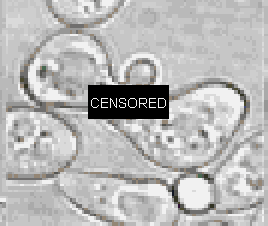A little background:
One theory of speciation starts with a single interbreeding population becoming split in two. Over time, while the two groups are isolated, they develop a genetic incompatibility. This incompatibility means that the two populations can no longer successfully interbreed. As a result, the two populations now represent two new species arising from a common ancestor.
This theory of speciation is attractive for two reasons. First, it's easy to imagine how populations might split: a river could change course and divide a territory; a land-bridge could disappear and separate two continents. Second, we see examples of incompatible species, such as the horse and donkey. The horse and donkey can mate but the offspring (the mule) is infertile.
To support this theory of speciation the current challenge is to find specific examples of the genetic incompatibilities involved.
The problem
Finding these incompatibilities within the genomes of species is extremely difficult. One reason is that speciation might happen over the course of hundreds or even thousands of generations, and thus over perhaps thousands or millions of years. We just can't watch it happen.
The solution
One thing I like about winemaking yeast (besides the alcohol thing) is that it's pretty easy to grow a mating population of yeast for hundreds of generations in the laboratory. Also, a single flask can hold billions of cells. Thus, yeast give us a large population that we can observe over an evolutionary timescale in the lab.
Jim takes a single population of yeast (in a flask) and splits it into two, just as speciation is presumed to start. As the populations grow and reproduce, they accumulate different genetic changes (mutations). As the yeast grow Jim exposes these two populations to different stresses such as high salt or low nutrients. When the populations are stressed many of the cells die, and many others underperform. A small, unknown number of the mutations might actually help some of the yeast cells deal with the new stress. The individuals with these mutations will reproduce more and take over the population. This is evolution by selection, happening in the laboratory.
The zinger here is that Jim then puts the two populations (flasks of yeast) back into
 contact after hundreds of generations apart. What he finds is striking: each population is better adapted to the specific stress they were exposed to, but matings between the two groups are much less fertile than expected. The time apart has led to adaptation, but also to genetic incompatibility. Now, the challenge is to find out how genetic changes cause this infertility. Currently Jim is getting the DNA sequence from several of these evolved populations and is pinning down what specific genetic changes give rise to the stress adaptations and the incompatibilities. When he does so, we'll have concrete examples of how evolution leads to the generation of new species.
contact after hundreds of generations apart. What he finds is striking: each population is better adapted to the specific stress they were exposed to, but matings between the two groups are much less fertile than expected. The time apart has led to adaptation, but also to genetic incompatibility. Now, the challenge is to find out how genetic changes cause this infertility. Currently Jim is getting the DNA sequence from several of these evolved populations and is pinning down what specific genetic changes give rise to the stress adaptations and the incompatibilities. When he does so, we'll have concrete examples of how evolution leads to the generation of new species. 



Comments